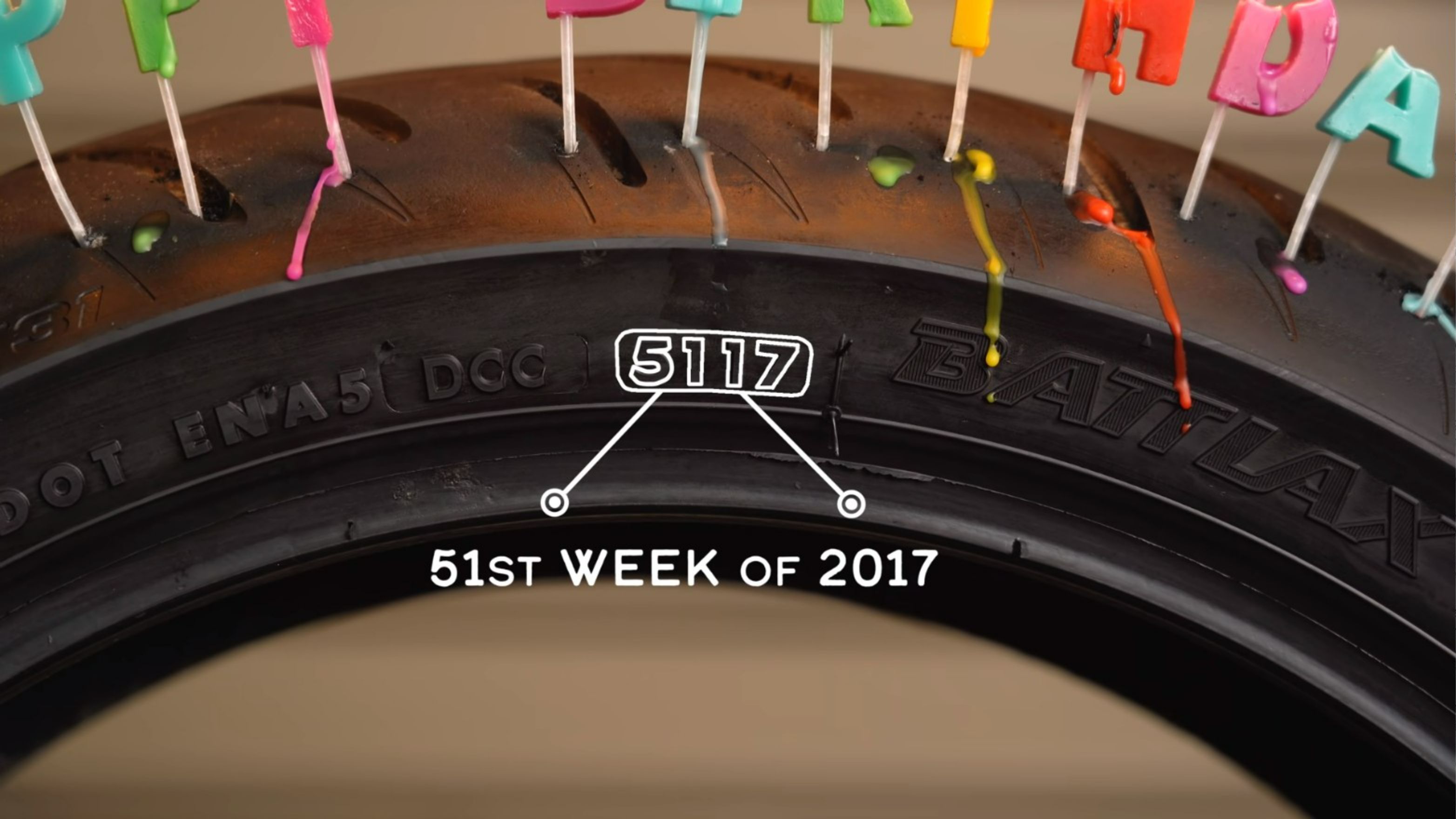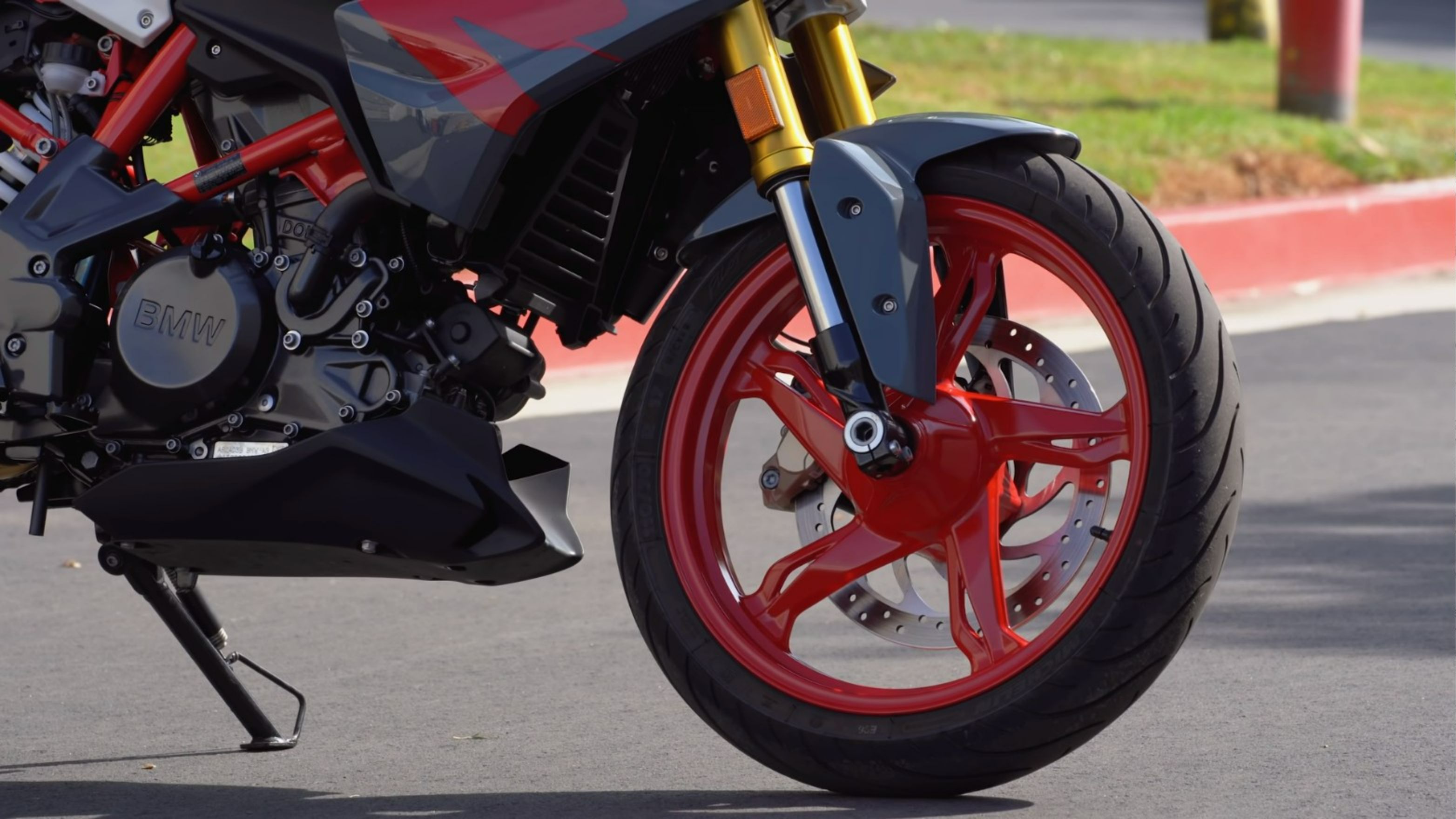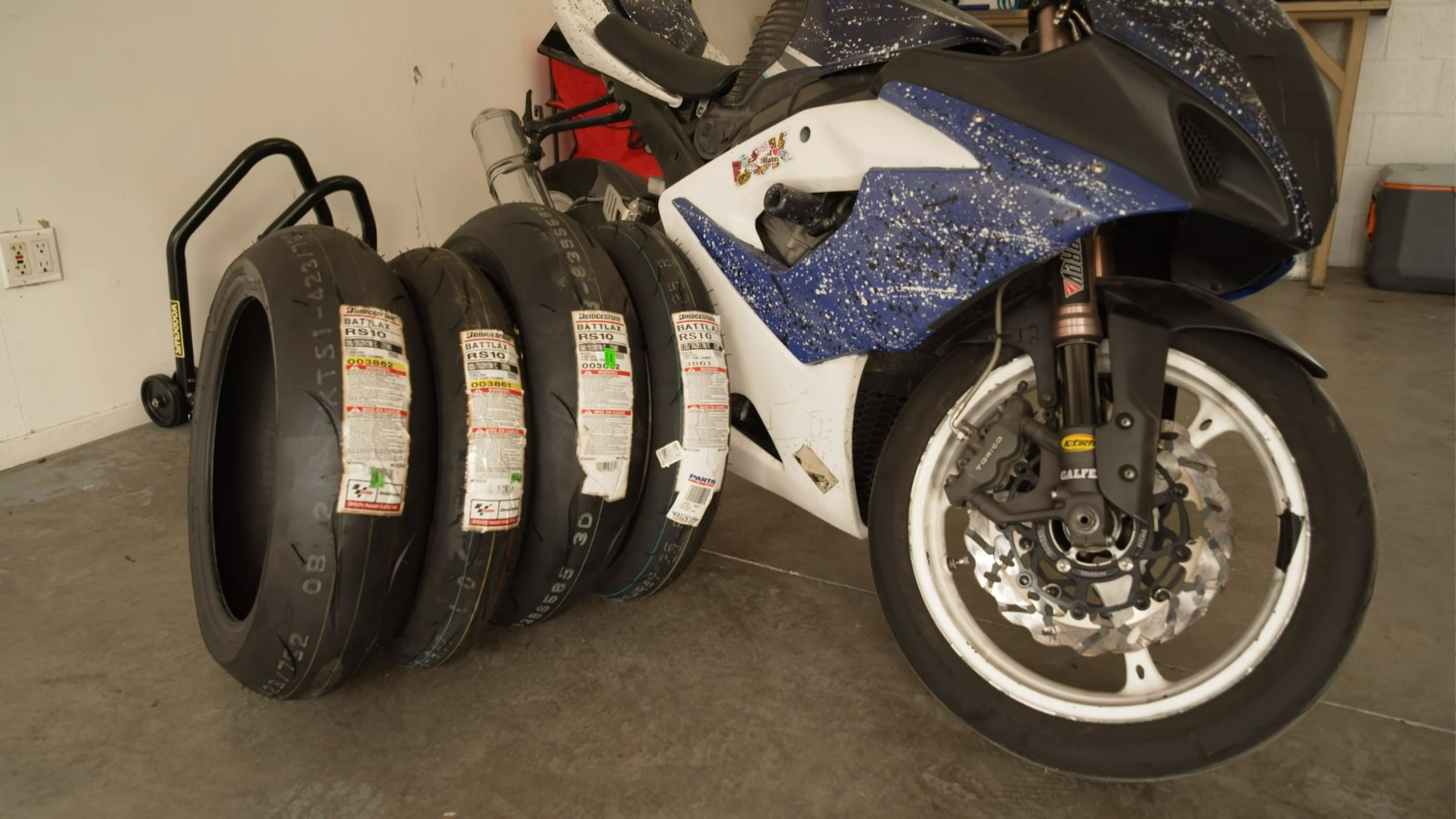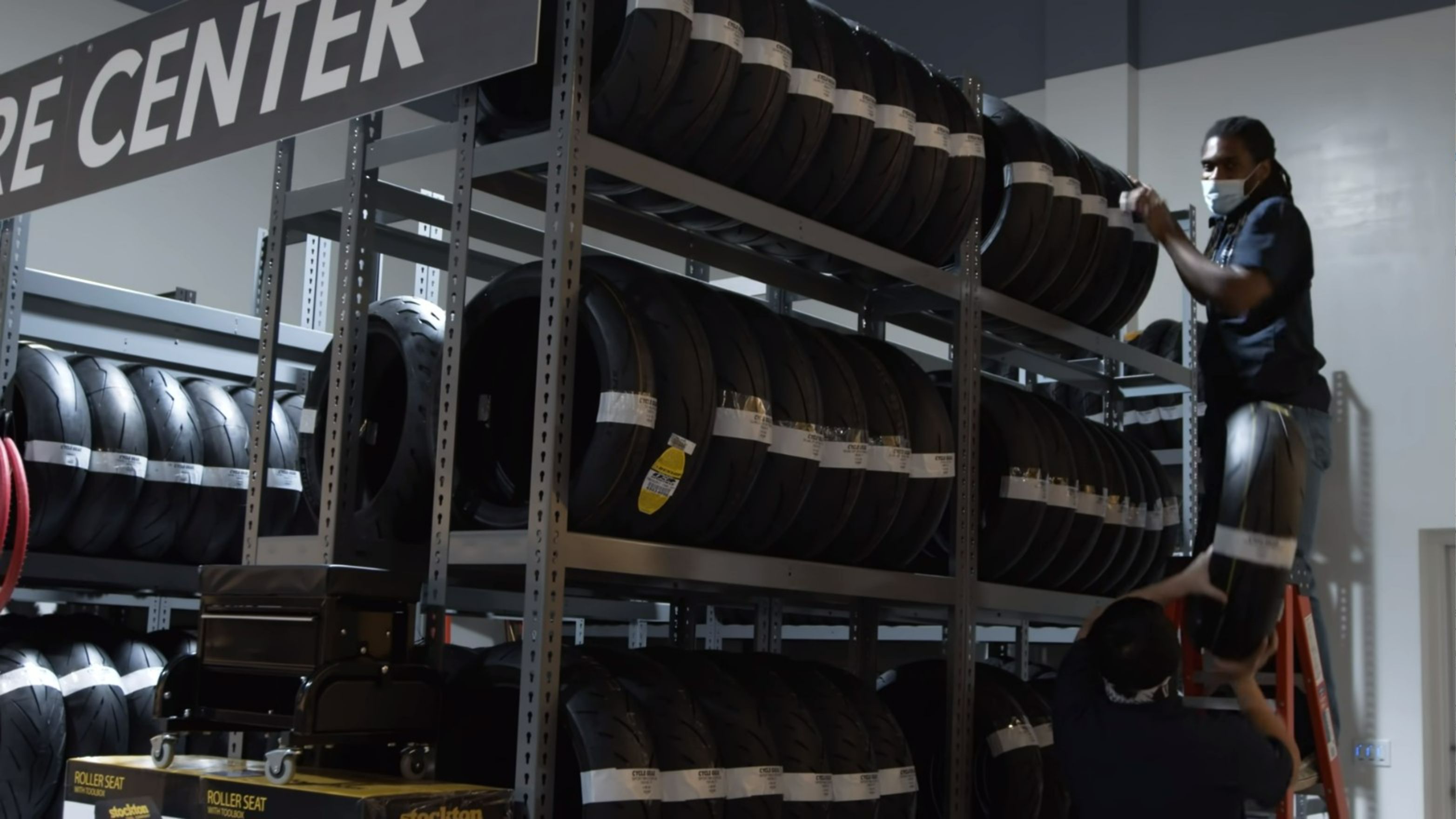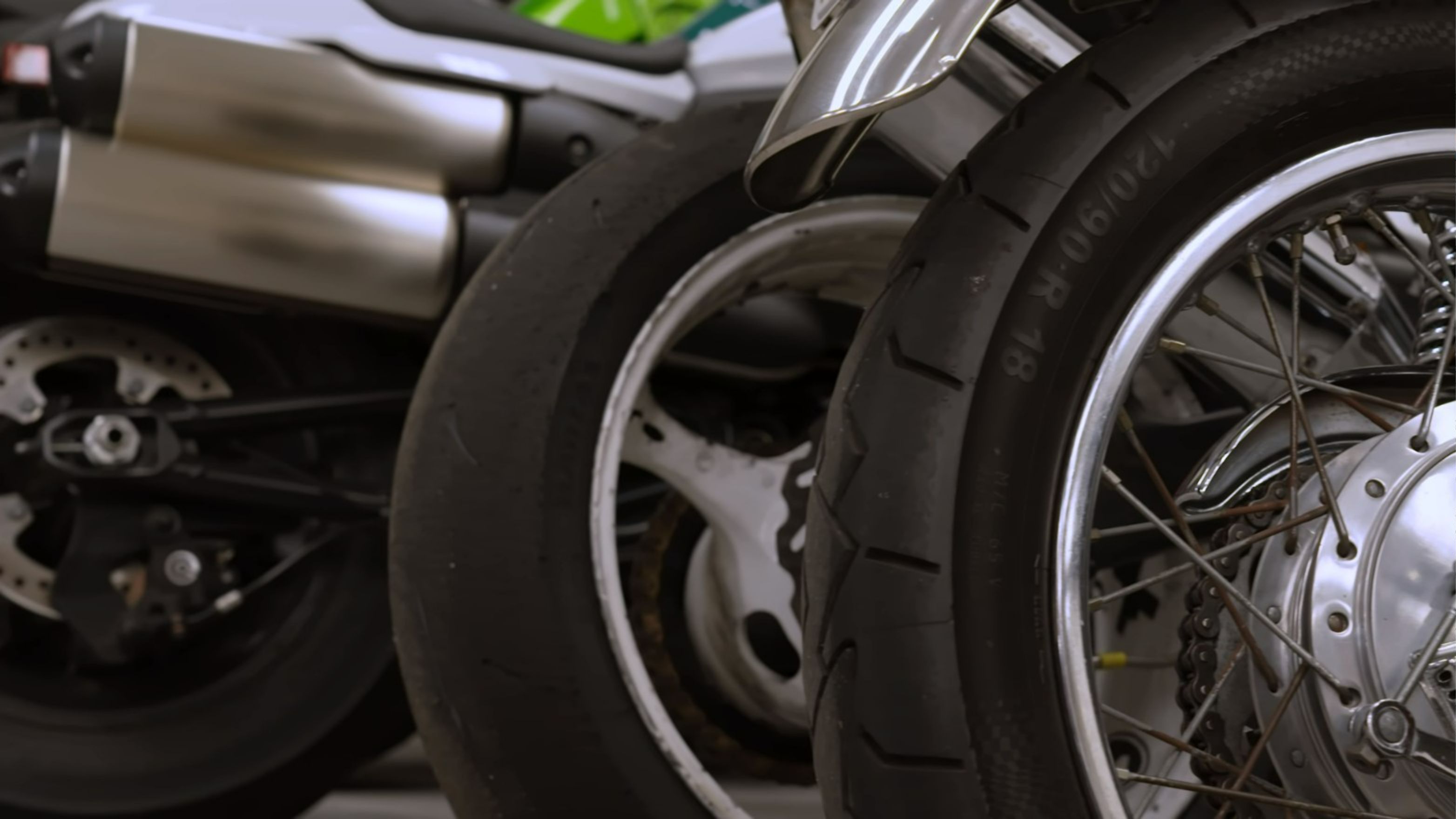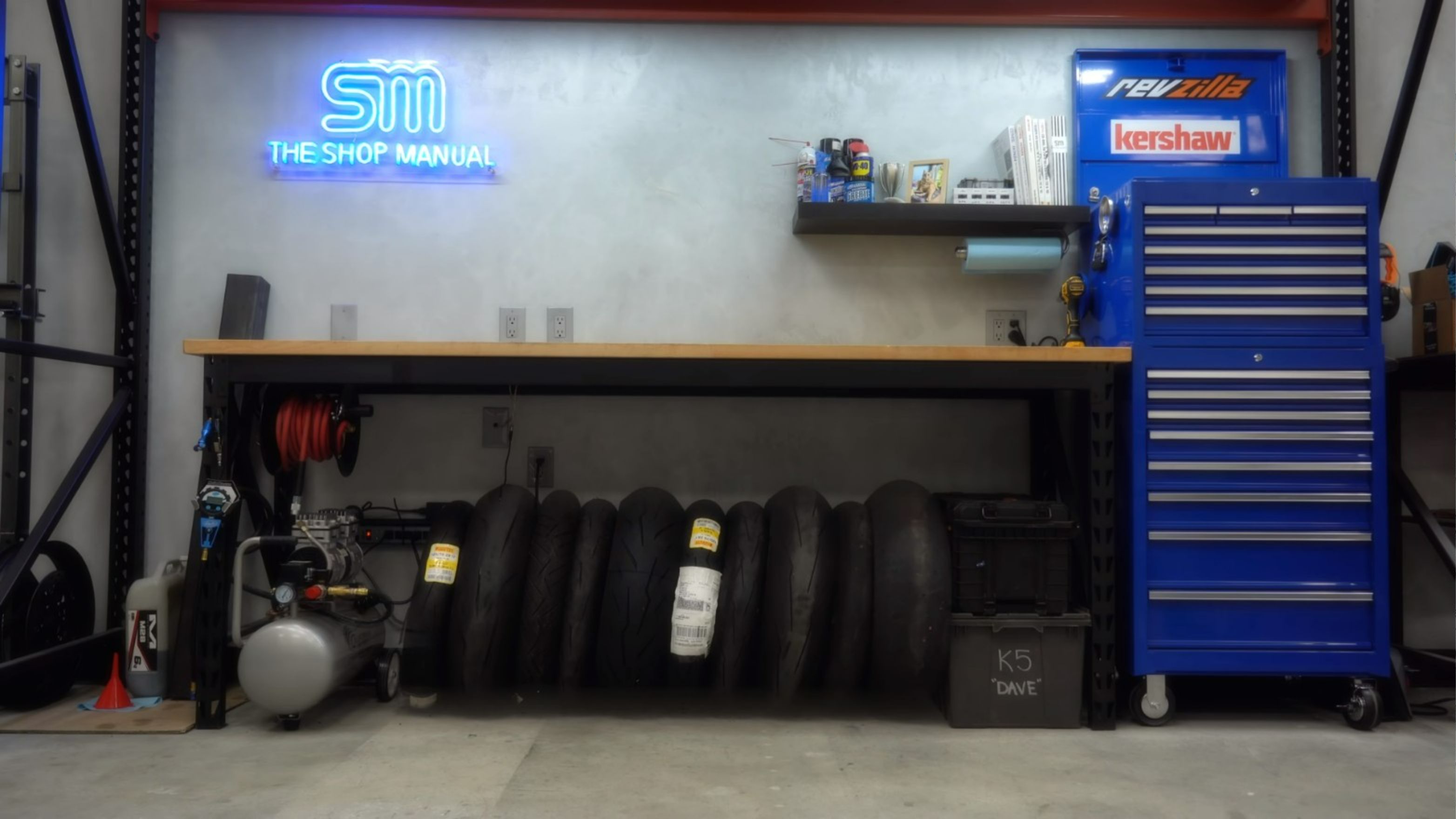There are a lot of theories suggesting why you shouldn’t store tires or leave them on your motorcycle for a long period and even why you shouldn’t buy tires that are older than a few years.
But how true are these things really? Well, that’s exactly what we’re debunking here, with the help of a very informative video by Revzilla.
How To Find The Manufacturing Date Of Your Tires?
Before getting into the nitty-gritty, let us tell you how you can check a tire's manufacturing date.
Instead of the usual MFD stickers found on most items, tires have their detail embarked on the tire wall. With the name, the tire wall features a series of numeric and letter codes which tell you all there is to know about the tire. Here’s what all you can find on a tire wall:
- Year and week of manufacture (Ex: 5117 means the 51st week of 2017)
- Speed rating (W, P, H, and more)
- Type of tire (R stands for Radial)
- Direction of rotation (arrows)
- Tubeless or Tube-Type (TL or TT)
Apart from this, the general size of the tire denotes the width, height of the wall, and load index.
Putting all this into action, a tire with 180/50 R17 71 W marking means it has:
- 180mm tire width
- Height of the wall is 50% of the tire width
- Tire nature is radial
- It’s meant for 17-inch alloy
- Has a load index of 71
- Has ‘W’ speed rating
Tires & Aging
With that out of the way, let’s tackle the tire age. Now, most people suggest that one should change their bike tires every five years, even if they aren’t worn out. So, how true is this?
Well, to find exactly this, Revzilla took a Suzuki GSX-R1000 to a racetrack and stuck two unused sets of tires on it, one from 2014 and the second from 2020, in order to find out the differences in grip levels and whether a tire indeed ages over time.
Also Read:
- Supercharged Suzuki Hayabusa vs 2021 Suzuki Hayabusa: Drag Race
- MotoGP: Mooney VR46 Racing Team Unveil A Striking New Livery For 2022
The result was, safe to say, a little shocking. Not only did the 2014 tires offer good grip, but the rider also claims that they felt every bit grippy as the set from 2020. Having said that, there was a key factor here worth noting here - proper storage conditions.
The host insists that the tires from 2014 only performed the way they did because they were stored in proper indoor conditions which improves the life of the rubber.
3-Point Guide To Tire Storage
If you want to store a tire for the future (or get through the winter season), there are five points you should keep in mind.
Heat
Like with everything, temperature plays a monumental role in deciding how fast something goes bad and this is also the case with tires. Motorcycle tires should always be stored in artificially cooled surroundings or basements as opposed to direct sunlight or the outdoors. Meanwhile, when the tires are in use, it becomes a little trickier and it’s advised to try and park the motorcycle in an enclosed area or at least somewhere with shade.
Oxygen & Light
Both Oxygen and light cause degradation of the rubber and harden it, thus decreasing grip levels. And the only way to avoid this from happening is to store the tires in a plastic bag, that too indoors. Sadly, you can’t do much about this when the tires are actually on your bike since you basically fill the tire with air comprising oxygen. Don’t fret, though, as most manufacturers already infuse anti-oxidants in the tire material to avoid degradation.
Stress
No, your mental stress isn’t affecting the tire, but mechanical stress sure is. The only way to avoid (or postpone) this is by ensuring proper tire pressure when riding and regularly tweaking the pressure based on the terrain.
As for storage, you should stack your tires vertically side by side with each other, rather than on top of each other to prevent degradation due to mechanical stress.
Conclusion
So, finally, we can conclude that YES, tires do age with time. But, for what it’s worth, they don’t just expire and magically lose grip, especially if stored properly.
Bottom line? You can certainly consider buying a three or four-year-old tire if it’s stored properly and it will likely offer you similar levels of grip as a one-year-old tire. What you should watch out for, though, is any signs of degradation, cracks, or wear.
Watch the full video here:


